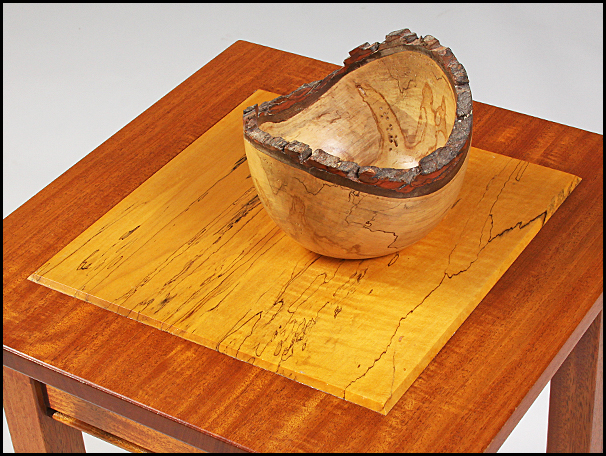
I have some beautiful curly, spalted, air-dried maple boards that I want to incorporate into an indoor project. I want to stop any potential for further deterioration that may be caused by the fungi that have caused the spalting to begin with, as I hope the final project will be handed down from parents to grandchildren. Should I treat the boards with a fungicide (like for lawns and shrubs), or some other chemical, prior to finishing? I’m thinking of finishing the final piece with a three-part oil finish. Will that sufficiently seal the surface so there won’t be any residual musty smell from the piece? Or am I totally off-track in wanting to use these boards? – Jay Cooper
Tim Inman: The fungi that cause spalting are not necessarily harmful. At least, they are not more harmful than the wood and wood dust from whence they come. Remember, nearly ALL wood dust can be harmful to our respiratory tracts. Some wood is more toxic than others. I’d treat the spalted wood accordingly. Spalting is the natural breakdown of the tree. The fungi require high moisture content in the wood to be able to grow and be active. Your project will require that your wood be dried down to ordinary cabinet lumber moisture content. So, the spalting will be dormant. A good sealer and finish will lock in anything that might cause smells or contamination from contact. Treenware items intended for food handling and preparation would probably be best made from something not spalted. Spalted wood is softer, too. Otherwise, it is beautiful in the eyes of many.
Chris Marshall: I’m a fan of spalted wood, both in board form and for woodturning purposes. Its random pattern of black jagged lines in the wood is striking, and it’s a case where natural wood decay can be used to pleasing effect. I haven’t noticed a particular smell that lingers with spalted lumber, once it’s dry and finished, so I think your choice of an oil finish will work fine for your project.
A great source for spalted wood is just about any firewood pile that’s exposed to occasional moisture. If you catch it right, meaning before the spalting process turns the wood punky and unusable for woodworking, you can end up with prime turning blanks in the most fantastic patterns. And, you won’t have to spend a penny on the material. I rough-turn my spalted bowl blanks first, then let them air dry for about a year to stop the fungal growth. After that, put your dust mask on and turn them like any other bowl.





